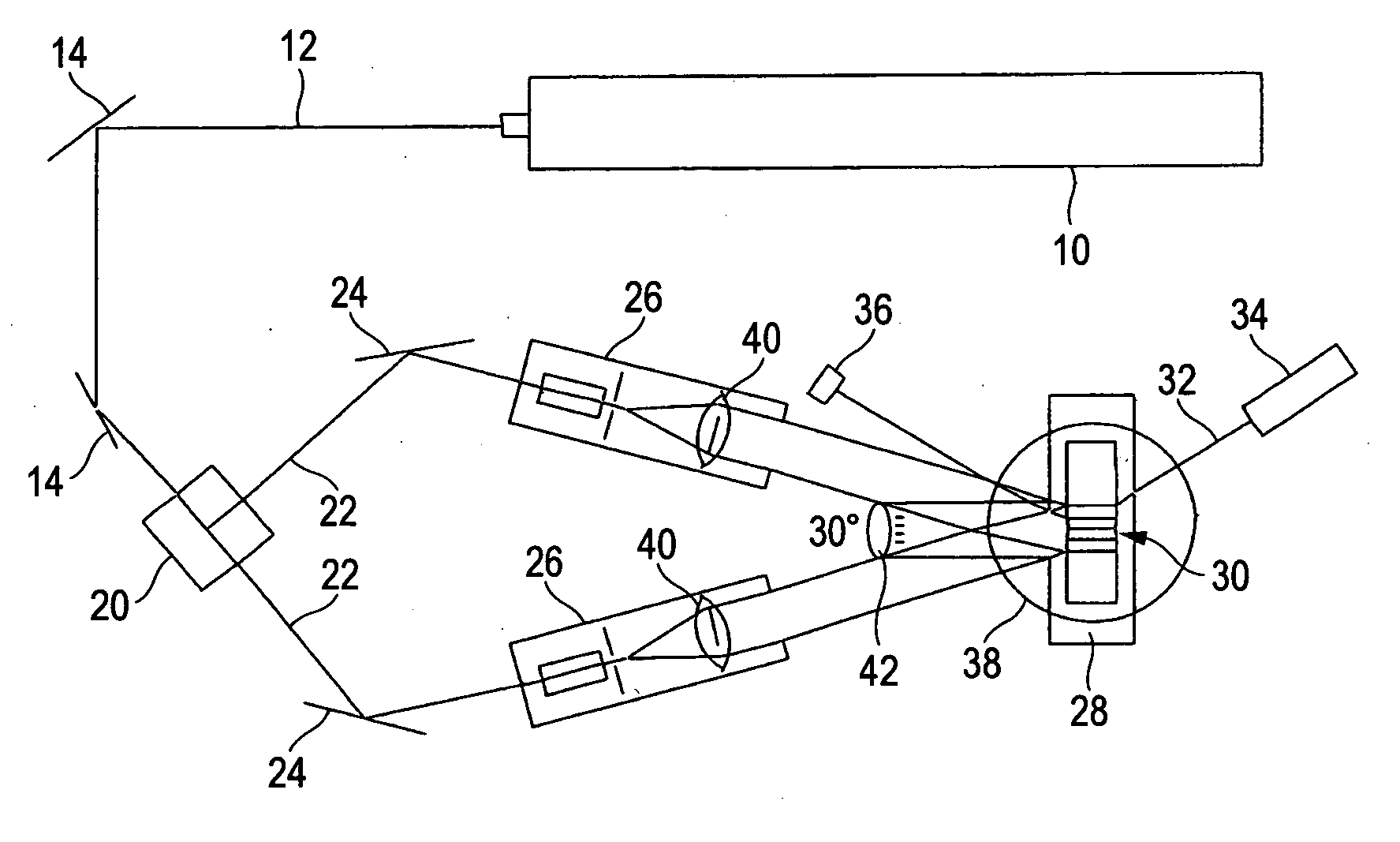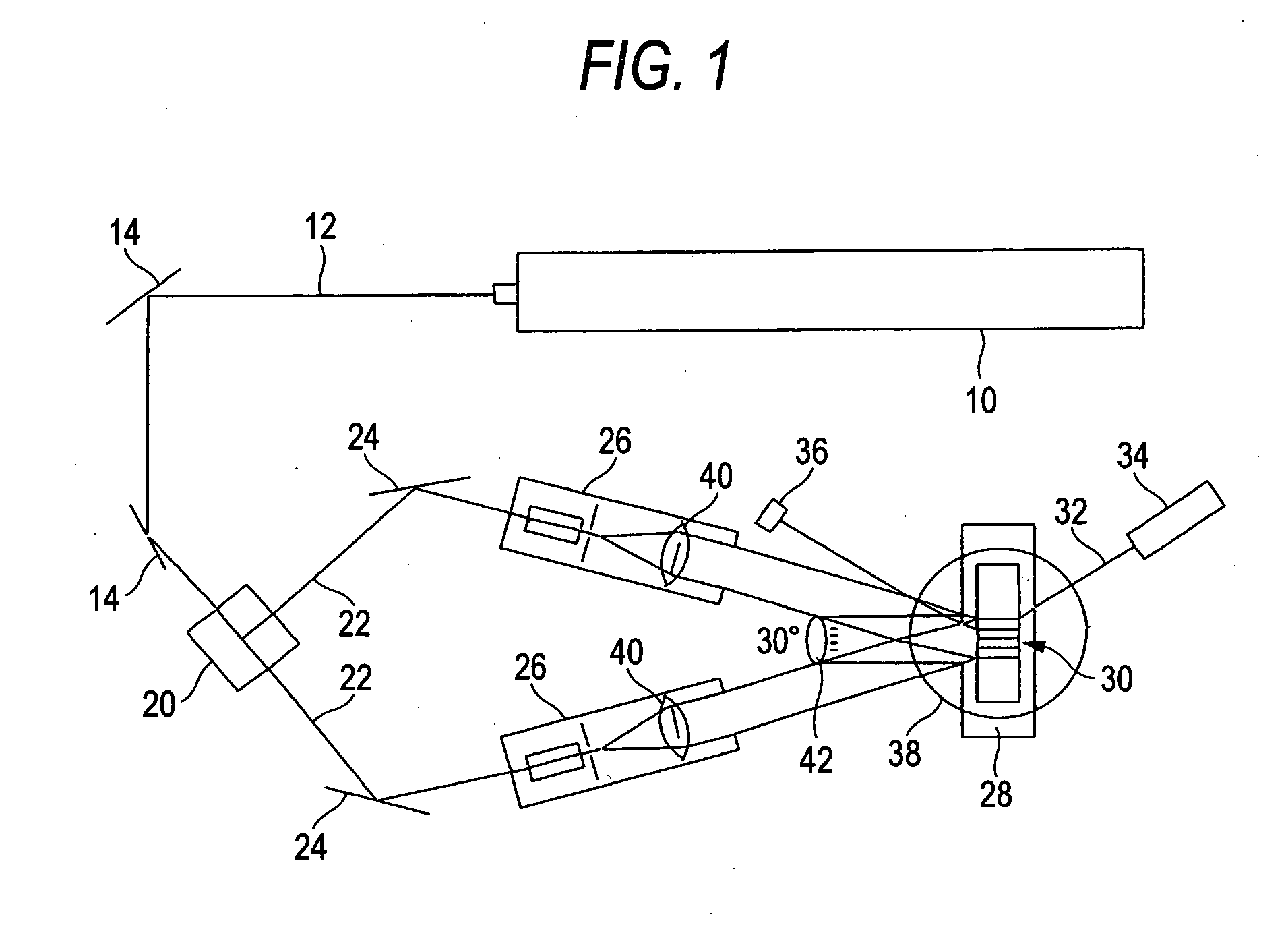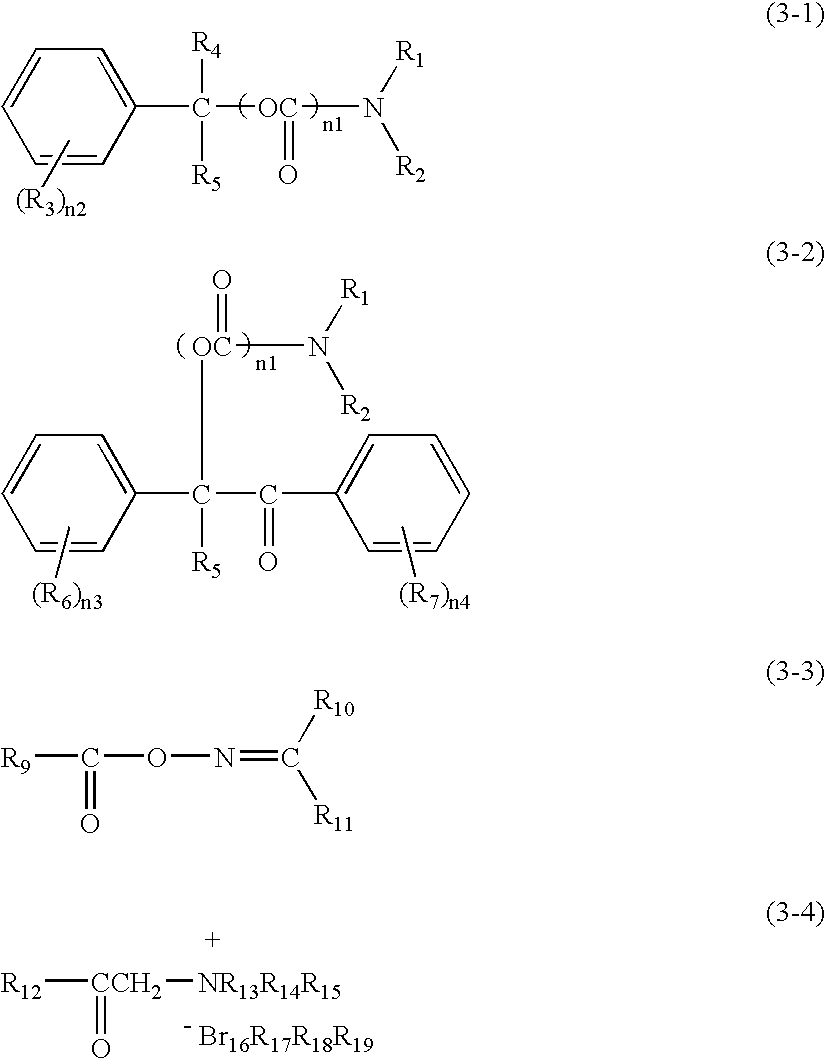Hologram recording material, hologram recording method, and optical recording medium
a technology of optical recording medium and hologram, which is applied in the direction of optical recording/reproducing/erasing methods, photomechanical devices, instruments, etc., can solve the problems of hard discs, inability to replace, and low light diffraction efficiency or reflectance of amplified holograms, etc., to achieve high diffraction efficiency, high sensitivity, and high density
- Summary
- Abstract
- Description
- Claims
- Application Information
AI Technical Summary
Benefits of technology
Problems solved by technology
Method used
Image
Examples
example 1
Hologram Recording Method Involving Color Development Process
[0421] The sensitizing dye, electron-donating compounds interference fringes recording component, additives and binder PMMA-EA (poly(methyl methacrylate)-5% ethyl acrylate) copolymer; Mw: 101,000) set forth in Table 1 were dissolved in a double to quadruple amount of methylene chloride (optionally acetone or acetonitrile as well) under a red light to prepare novel hologram recording material compositions 101 to 106 comprising the polymer component of the invention. Further, as opposed to these inventive compositions, comparative sample compositions 11 to 16 which are of novel recording type but free of polymer component were prepared. The term “%” as used herein is meant to indicate % by weight based on binder PMMA-EA.
TABLE 1SensitizingElectron-donatingInterference fringesSampledyecompoundrecording componentAdditives101S-7580%—I-5 50% + PL-1 15%SO-1 8%Comparative 11″—I-5 50% + L-2 10%″102S-8130%—I-5 50% + PL-1 15%SO-2 3...
example 2
Discoloration Process (Sensitizing Dye+Discolorable Dye) Hologram recording Method
[0436] Under a red lamp, the sensitizing dye, electron-donating compound, discoloring agent precursor, discolorable dye and binder PMMA-EA (poly(methyl methacrylate-5% ethyl acrylate) copolymer, Mw: 101,000) set forth in Table 3 were dissolved in methylene chloride (optionally with acetone or acetonitrile) in an amount of twice to four tines the weight of these components to prepare novel hologram recording material compositions 201 to 204 comprising the polymer component of the invention. Further, as opposed to these inventive compositions, comparative sample compositions 21 to 24 which are of novel recording type but free of polymer component were prepared. The term “%” as used herein is meant to indicate % by weight based on binder PMMA-EA.
TABLE 3Electron-DiscoloringSensitizingdonatingagentDiscolorableSampledyecompoundprecursordye201S-930.8%A-142%I-550%PG-312%ComparativeS-930.8%A-142%I-550%G-168%...
PUM
 Login to View More
Login to View More Abstract
Description
Claims
Application Information
 Login to View More
Login to View More - R&D
- Intellectual Property
- Life Sciences
- Materials
- Tech Scout
- Unparalleled Data Quality
- Higher Quality Content
- 60% Fewer Hallucinations
Browse by: Latest US Patents, China's latest patents, Technical Efficacy Thesaurus, Application Domain, Technology Topic, Popular Technical Reports.
© 2025 PatSnap. All rights reserved.Legal|Privacy policy|Modern Slavery Act Transparency Statement|Sitemap|About US| Contact US: help@patsnap.com



